© Mahdiseño 2024. All Rights Reserved.

Building design involves planning and creating functional, aesthetic, safe, and sustainable architectural and structural elements for construction projects.

Interior design is the art of enhancing the interior spaces of buildings to create functional, aesthetically pleasing, and harmonious environments.

Landscape design involves planning and arranging outdoor elements to create beautiful and functional spaces that blend with nature.

Urban design shapes cities by planning streets, public spaces, and transportation networks to create livable environments with pleasing architecture.
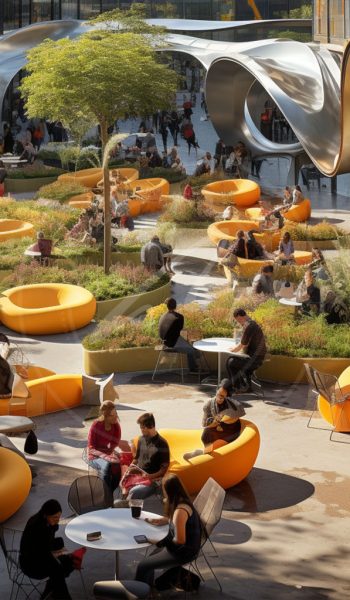
Architecture
Regenerative architecture is a practice that involves using the natural world as the medium for and generator of architecture. It responds to and utilizes living and natural systems on a site to create sustainable buildings. The regenerative design focuses on “doing good” rather than merely “less bad”.
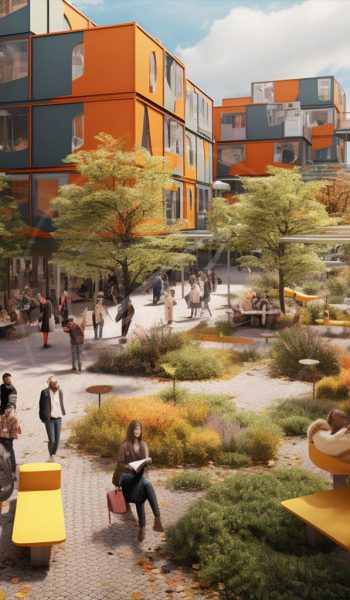
Architecture
Ever since environmental protection and sustainability became hot topics, architectural practices have come under scrutiny. After all, architecture and construction are notorious for producing waste and using concrete —a huge contributor to carbon emissions. So, is there a way to make architecture more eco-friendly and reduce its effect on our planet?
Architects and urban planners promote and implement green building practices, such as LEED (Leadership in Energy and Environmental Design) certification, which encourages sustainable construction methods and materials.
Architects are involved in retrofitting existing buildings to make them more energy-efficient and environmentally friendly, reducing the carbon footprint of urban areas.
Architects design buildings with a focus on energy efficiency, using passive solar design, high-performance insulation, and renewable energy sources to reduce carbon emissions.
Architects and planners engage with local communities to ensure that climate change mitigation and adaptation strategies are culturally and socially sensitive and meet the needs of residents.
Architects and urban planners can advocate for policy changes at local, regional, and national levels to support sustainable and climate-resilient development.
Architects and planners can play a role in educating the public and policymakers about the importance of sustainable urban development and the impacts of climate change.
Architects design buildings with a focus on energy efficiency, using passive solar design, high-performance insulation, and renewable energy sources to reduce carbon emissions.
Urban planners develop strategies for adapting cities to climate change, including flood protection measures, heat mitigation strategies, and emergency response plans.
Architects and urban planners design resilient infrastructure that can withstand the impacts of climate change, including sea-level rise, extreme weather events, and flooding.
Urban planners help create more compact, walkable cities that reduce the need for car travel, lowering greenhouse gas emissions. This includes designing mixed-use developments and transit-oriented developments (TODs).
Architects and planners incorporate parks, green roofs, and urban gardens into city plans to enhance urban biodiversity, improve air quality, and provide carbon sequestration.
Architects and urban planners work on preserving and creating green corridors and biodiversity-friendly urban spaces, which not only enhance urban ecosystems but also contribute to carbon sequestration and climate resilience by promoting natural cooling and reducing the urban heat island effect.
Urban planners work on designing and expanding public transportation systems to reduce the reliance on private vehicles, which can contribute to air pollution and emissions.
Urban planners can influence land use policies and zoning regulations to encourage sustainable development, protect green spaces, and reduce urban sprawl.
Architects and planners employ data and technology, such as Geographic Information Systems (GIS) and building information modeling (BIM), to inform sustainable design and urban planning decisions.
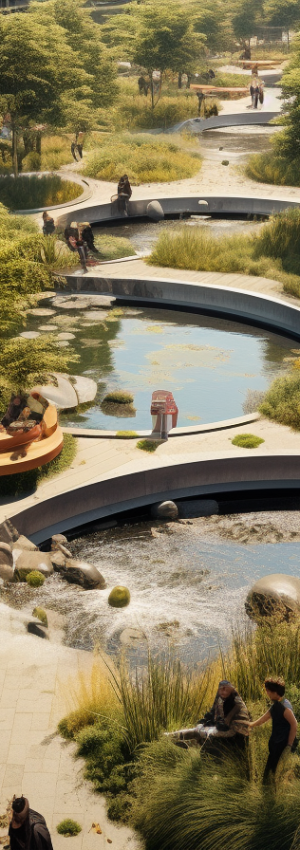
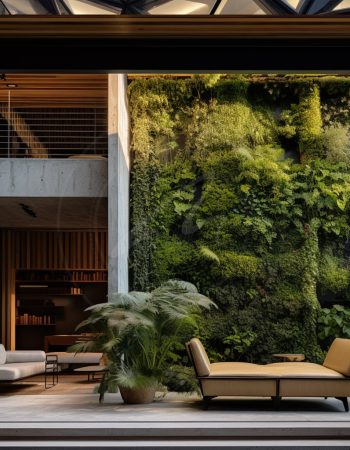
Biophilic architectural design is an approach to architecture that seeks to connect building occupants more closely to nature. It is a way in which architects incorporate nature into building spaces to contribute to the health and well-being of occupants. Biophilic design fosters positive and sustained interactions and relationships among people and the natural environment.
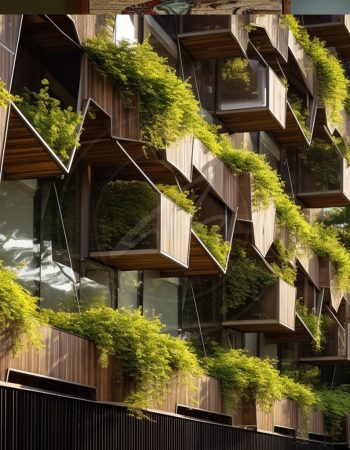
Parametric design is a design method where features (such as building elements and engineering components) are shaped according to algorithmic processes, in contrast to being designed directly. In this method, parameters and rules determine the relationship between design intent and design response. Mixing parametric design with artificial intelligent technology can help to create the images as are showing in this section.
Sustainable architecture involves more than just energy-efficient designs and renewable materials. Biophilic and parametric architecture are innovative approaches that go beyond the green facade and create harmonious and inspiring spaces.

Enhanced Connection with Nature: Biophilic architecture integrates natural elements like sunlight, vegetation, and water into the design. This connection with nature improves occupants’ mental and physical well-being, fostering a healthier and more productive environment.

Cost Considerations: Implementing biophilic and parametric designs can be more expensive initially. The specialized technology and materials required may strain project budgets, making these approaches less accessible for some clients.
“The Intersection of Creativity: Where Architecture Meets Artistry”

Green lifestyle is any action or activity that results in a positive impact, to any degree, on the environment so that the planet can continue to support future generations.
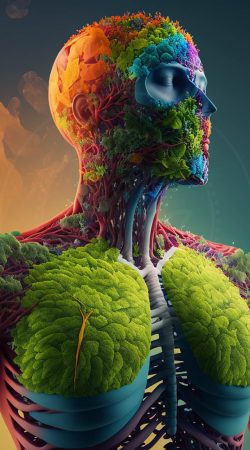

The rate of change since the mid-20th century is unprecedented over millennia. Earth’s climate has changed throughout history.
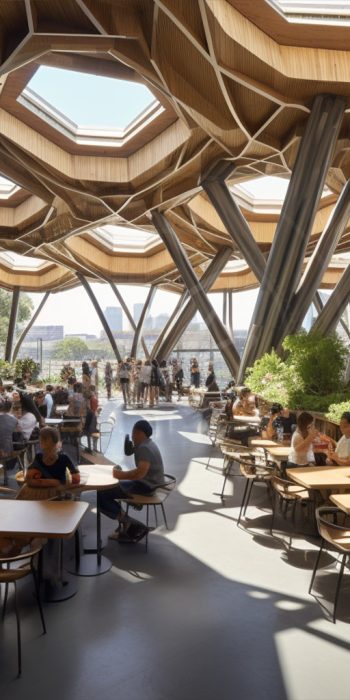
Green Space Design, Biophilic Urbanism, Landscape and Open Spaces
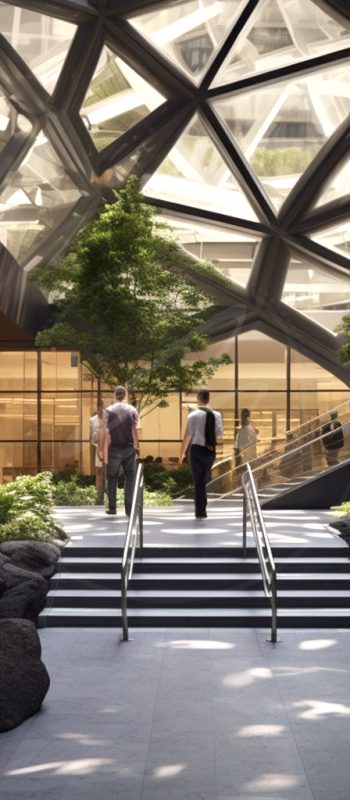
Exterior and Facade Design, Interior Design in different styles, Buildings and Plans
At Mahdiseño, we provide a variety of architectural design services ranging from exterior-interior design to facade design in any desired style. Additionally, with a subscription, you can gain access to numerous ideas and designs for landscape and urban design.
For those interested in art, we offer digital art with unique styles across various categories. Should you require a specific design and customization, please do not hesitate to reach out to us. Connect with us on LinkedIn and Instagram to stay updated on our latest work.